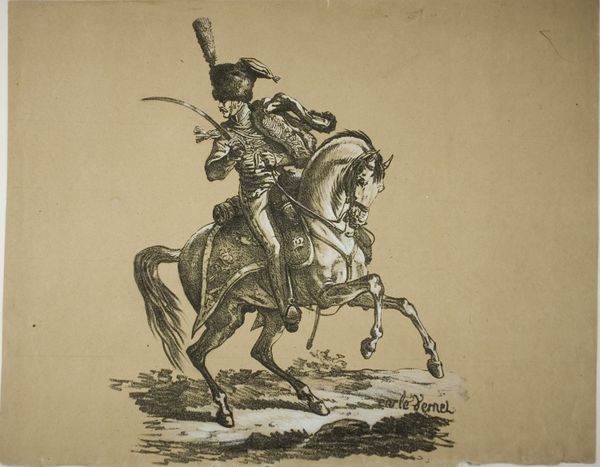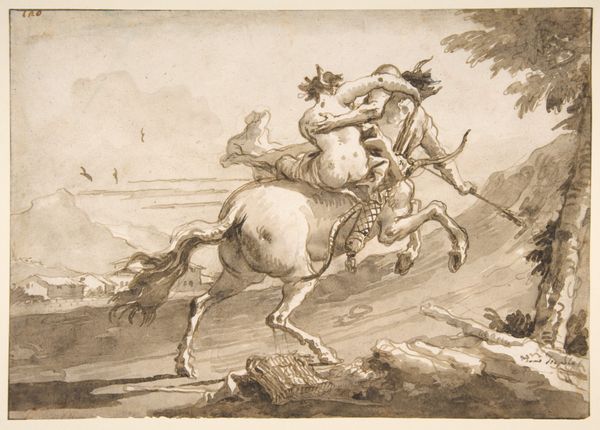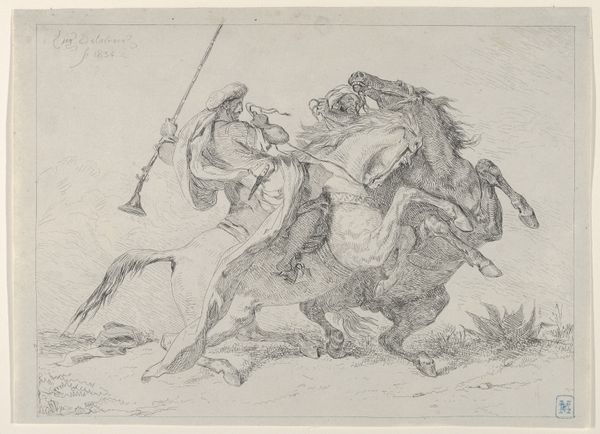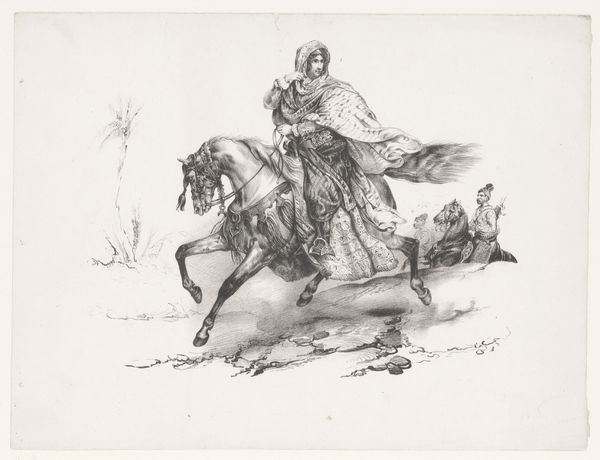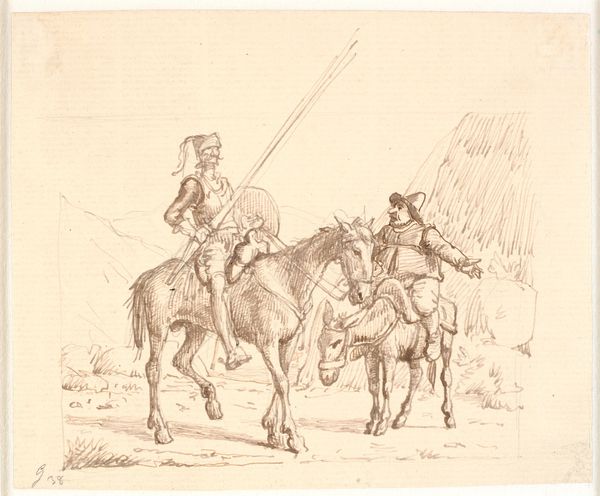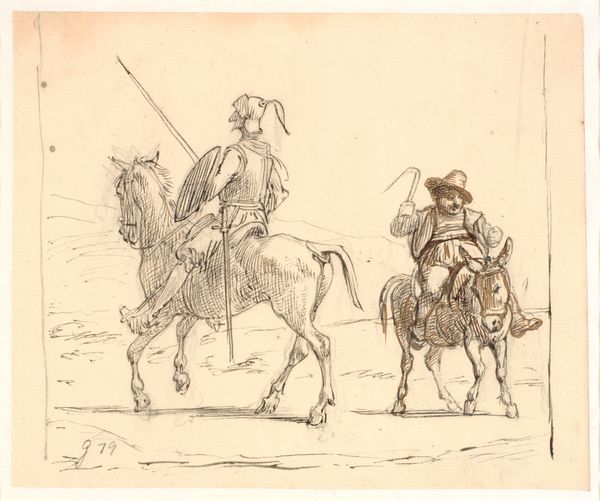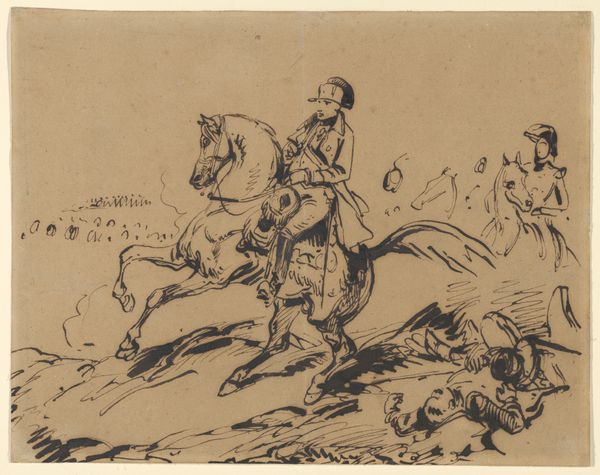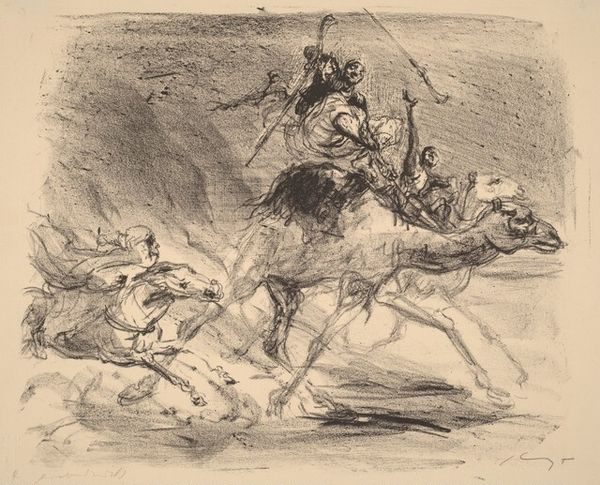
Dimensions: sheet: 7 9/16 x 10 13/16 in. (19.2 x 27.4 cm)
Copyright: Public Domain
Curator: Here we have Giovanni Domenico Tiepolo's "An Oriental Horseman," dating from 1727 to 1804. It's currently housed here at the Metropolitan Museum of Art. Editor: Wow, the first thing that strikes me is its movement! The horse and rider feel so dynamic, poised in mid-stride, like they’re about to leap right off the page. There's a real feeling of propulsion and urgency. Curator: Indeed. It is rendered with pen and watercolor, a common medium for Tiepolo, which allowed for a fluid, expressive line. Notice how the washes of color create depth and volume, particularly in the horse's musculature. This showcases Tiepolo's masterful command of draftsmanship, a skill honed within a family of artists and through engagement with the flourishing Venetian print market. These works were circulated and collected. How do we perceive orientalism here? Editor: I’m also thinking about the story this piece might be telling. That spear held high is just begging for adventure or maybe a dramatic encounter. It also reads as being orientalist. Are we viewing some kind of cultural fantasia through a very Venetian lens? I think a close examination reveals layers of construction, not merely objective observation. Curator: Precisely. Tiepolo and others like him relied on prevalent understandings of the ‘Orient,’ influencing material choices like dress, shield, and overall composition. But his genius lay in translating these cultural markers through line and color, achieving great artistry. Editor: The use of earthy, muted tones enhances that old-world, almost storybook atmosphere, while also hinting at the materials involved. What inks did they use? What type of paper? Was the production cost effective? Those questions dance in my head while absorbing the scene. It also hints to the labor behind it...I like picturing Tiepolo in his studio...wondering what he was listening to. Curator: That is the key, it creates a bridge between craftsmanship, cultural depictions, and even hints to commerce. Editor: Ultimately it shows, though. Despite the layered, problematic implications and historic materials involved, it moves! Curator: Agreed. A fascinating convergence, isn't it? Editor: A truly intriguing work!
Comments
No comments
Be the first to comment and join the conversation on the ultimate creative platform.

